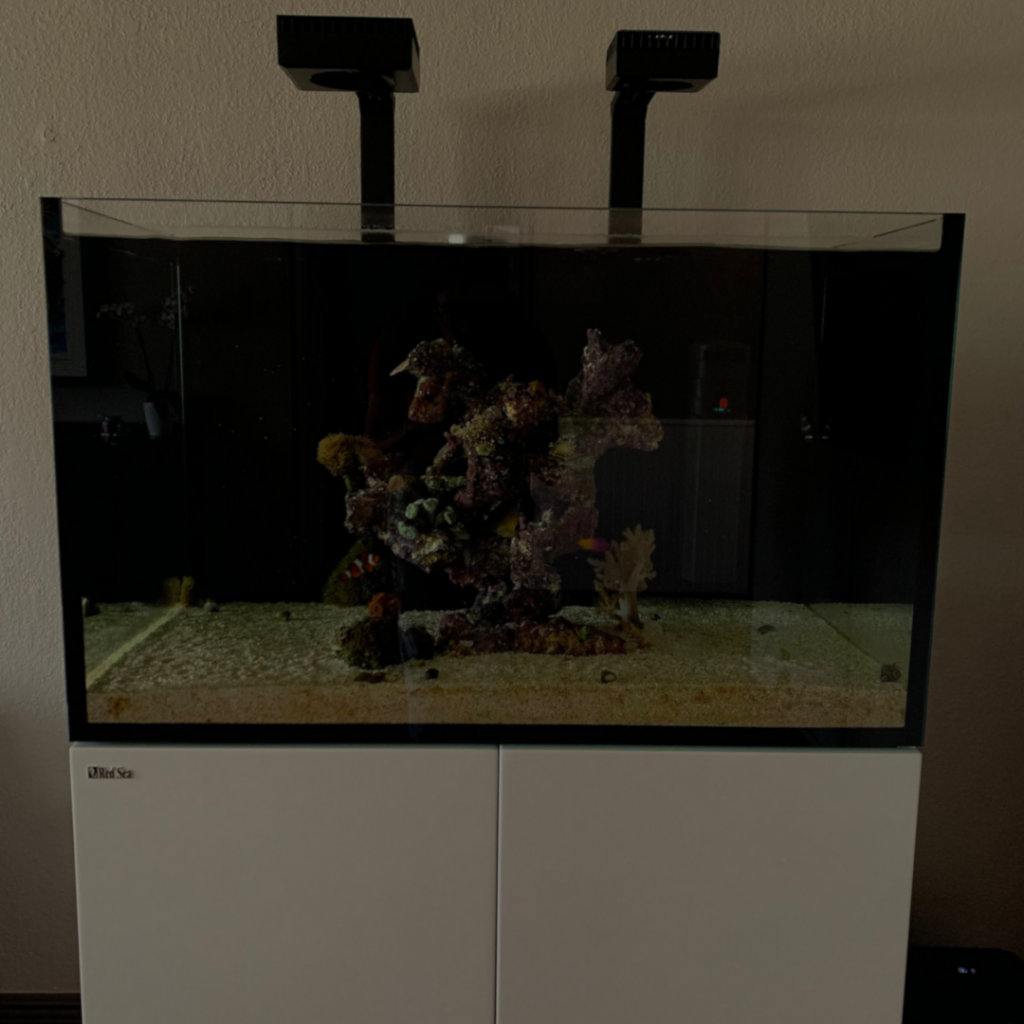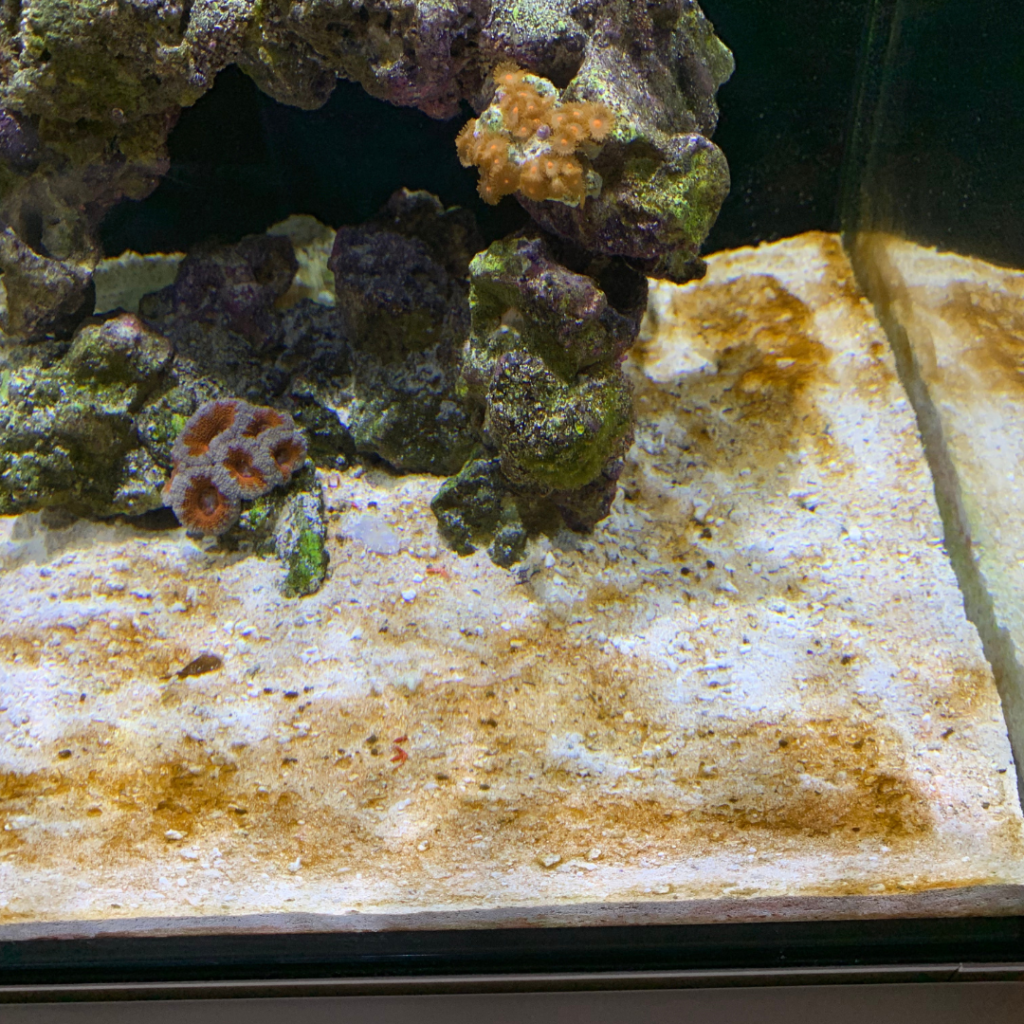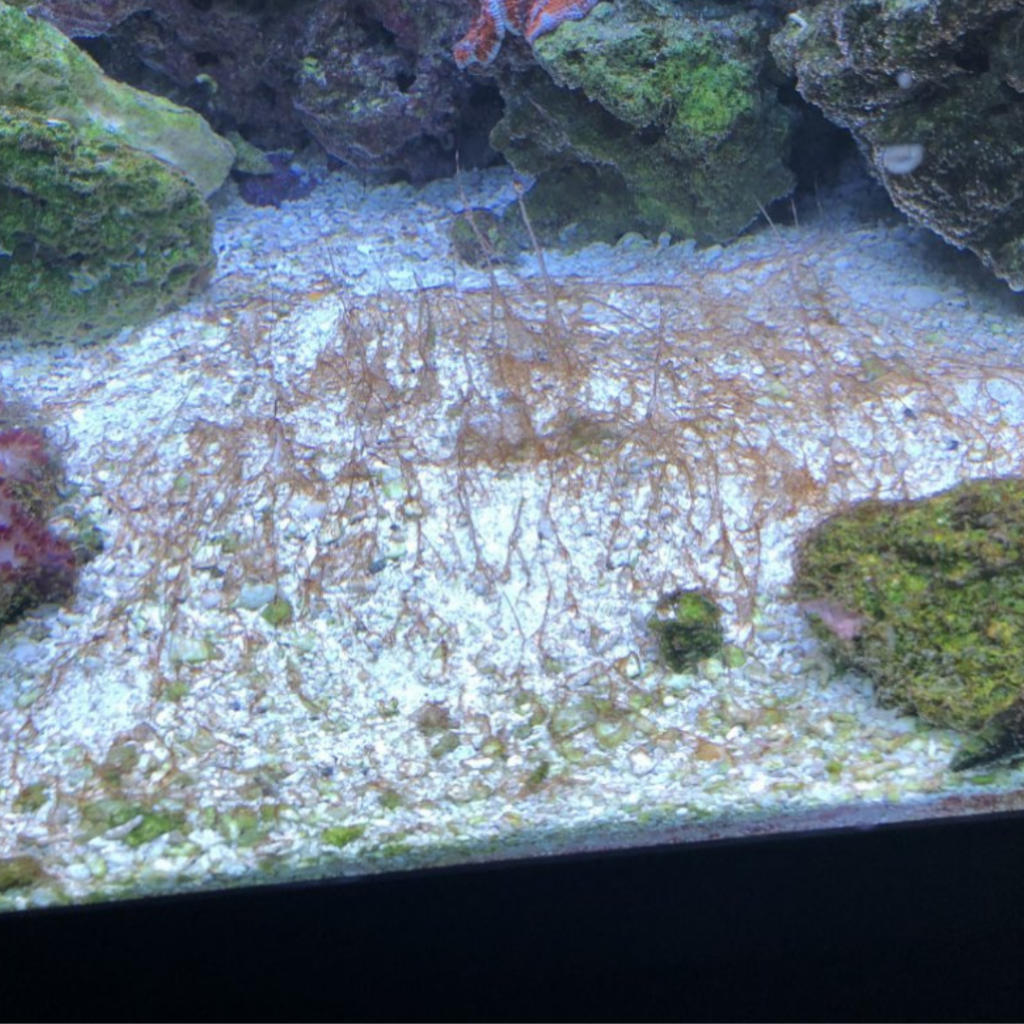Dinoflagellates, commonly known as “dinos,” are a group of single-celled organisms that can cause havoc in your reef tank. These organisms can rapidly reproduce and multiply, leading to a variety of problems, such as reduced water quality, smothering of corals, and even fish fatalities. Reef tank dinos can be very hard to get rid of, so in this article, we will discuss how to identify dinoflagellates, understand their causes, and provide a step-by-step guide on how to get rid of dinoflagellates from your reef tank.
What are Dinoflagellates?
Dinoflagellates are microscopic, single-celled algae that can exist in both freshwater and marine environments. They form a large and diverse group of protists, with over 2,000 known species.
While some dinoflagellates are photosynthetic, obtaining energy from sunlight, others are heterotrophic, meaning they feed on other organisms.
In reef aquariums, dinoflagellate blooms can cause serious issues, as they can outcompete other beneficial algae and harm the delicate balance of the ecosystem. Getting rid of of dinos in your reef tank is crucial to fish and coral health.
How to Identify Dinoflagellates
Dinoflagellates can be challenging to identify, as they often resemble other algae types. They typically appear as a brown or rust-colored film on your tank’s surfaces, such as the glass, rocks, and sand. They can also form slimy, stringy mats that may have air bubbles trapped within them.
Unlike other types of algae, dinoflagellates can be photosynthetic or motile, meaning they can move around the tank. If you notice algae moving or repositioning itself, it may be dinoflagellates. They often emerge during the day when the lights are on and retreat into the rocks and sand at night.
I would notice the Dinos floating my water column at night when the tank lights were off.
how to get rid of Dinos from Your Reef Tank
Reef tank dinos can be one of the most frustrating nuances for reefers of any experience level.
The following methods have been used by myself as well as various other reefers and have all been found effective or answering the question of how do I get rid of dinos from my reef tank?
Remember to never give up and try a combination of eradication methods to best solve the issue of dinoflagellates.
Adjust Lighting and Implement a Total Blackout

Altering your aquarium lighting can help manage dinoflagellate growth. Consider reducing the intensity of your aquarium lighting and using a more balanced spectrum to inhibit dinoflagellate growth while still supporting coral growth. Implement a consistent lighting schedule to minimize stress on your corals.
In severe cases, implementing a total blackout can be an effective method to combat dinoflagellates. By turning off your aquarium lights for 3-5 days, you’ll deprive dinoflagellates of their primary energy source, photosynthesis. During the blackout, it is essential to monitor your corals and other photosynthetic organisms closely, as they can also be affected by the lack of light. Ensure proper water circulation and aeration during the blackout to maintain oxygen levels in the tank.
Be careful not to do too long of a black out, as you can risk losing some corals in any extended period of a blackout.
Increase Nutrient Levels
Dinoflagellates thrive in low-nutrient environments. By raising nutrient levels within acceptable ranges, you can help create an environment that favors more desirable algae species, which can outcompete dinoflagellates for resources.
Make sure to maintain optimal water parameters and avoid overfeeding to prevent nutrient levels from becoming too high. Adding a small dose of nitrate and phosphate can also help promote the growth of other algae species that compete with dinoflagellates.
When doing this you can also promote the growth of other algae such as bubble algae and green hair algae. So keep a close eye on your tank and be on the lookout for any additional growth of nuance algae.
Improve Water Flow
Increasing water flow in your tank can help prevent dinoflagellate blooms by ensuring proper nutrient distribution, promoting gas exchange, and preventing dead spots where dinoflagellates can accumulate.
Adjust or add powerheads to create a varied and turbulent flow pattern that reaches all areas of the tank. Consider using controllable pumps that can create wave-like patterns and randomized flow, which can be more effective in disrupting dinoflagellate growth.
Manual Removal
Manually removing Dinos from your tank can be an effective short-term solution. Use a siphon to remove visible dinoflagellate film from surfaces and vacuum the sand bed to remove any settled dinoflagellates.
Be prepared to repeat the process as necessary, as dinoflagellates can quickly regrow. Manual removal can be combined with other methods to achieve a more effective and long-lasting result.
When used alone, manual removal is not effective in removing dinos.
Utilize UV Sterilizers

Ultraviolet (UV) sterilizers can be a powerful tool in combating dinoflagellates and other undesirable organisms in your reef tank. These devices use ultraviolet light to kill or damage the DNA of microorganisms, such as algae, bacteria, and parasites, as they pass through the sterilizer.
This process helps to prevent the spread of harmful organisms and can significantly reduce the occurrence of dinoflagellate blooms.
To use a UV sterilizer effectively, it is crucial to select the appropriate size and flow rate for your aquarium. The size of the sterilizer should be chosen based on the volume of your tank, while the flow rate should be adjusted to ensure that water moves through the sterilizer at a speed that allows for optimal UV exposure.
Slower flow rates allow for more extended exposure to the UV light, increasing the chance of killing or damaging the target organisms.
It’s important to note that while UV sterilizers can be helpful in managing dinoflagellate populations, they are not a standalone solution. Combining a UV sterilizer with other methods outlined in this guide, such as adjusting lighting, managing nutrients, and improving water flow, will help to ensure the overall health and stability of your reef tank.
This multi-faceted approach is key to preventing and addressing dinoflagellate issues in the long term.
Dinos Vs. Diatoms: How to tell the difference
These two types of algae can closely resemble each other and cause similar issues within your reef tank. It is important to know which one you are dealing with so you can implement the correct strategy to eliminate them.
Dinoflagellates:

- Typically appear as a brown or rust-colored film on your tank’s surfaces, such as the glass, rocks, and sand.
- Can form slimy, stringy mats that may have air bubbles trapped within them.
- Can be photosynthetic or motile, meaning they can move around the tank.
- Often emerge during the day when the lights are on and retreat into the rocks and sand at night.
Diatoms:

- Are single-celled algae encased in silica cell walls, giving them a unique and often intricate appearance.
- Usually brown or golden-brown in color.
- Form a thin film on surfaces in your tank, such as glass, rocks, and sand.
- Common in new tanks and usually decline as the tank matures and stabilizes.
If you notice algae that moves or repositions itself, it may be dinoflagellates. In contrast, diatoms are more static and often associated with new tank setups or imbalances in water parameters. Regular water changes, proper tank maintenance, and introducing algae-eating organisms like snails can help control diatom growth.
Related: Diatoms or Dinos: How to identify the Difference (From Expert Reefers)
How i got rid of dinos in my tank

I remember the first time I spotted dinos in my Red Sea max nano, clinging to my coral and creating a slimy film on the rocks and sand. I was devastated.
My initial attempt at getting rid of the Dinos in my tank involved the use of Dino X. Although it had been suggested by many fellow reef enthusiasts, I quickly found out that it was not the solution for my tank. The Dino X was very tough on my corals and fish resulting in closed polyps and stressed fish.
Determined to save my tank, I began researching other methods to fight the infestation. I tried blackouts, which involved covering my tank for 2 days to reduce the light that Dinoflagellates need to thrive. This method did reduce the Dinos’ presence, but they returned once I resumed the tank’s normal light cycle.
Desperate for a solution, I then tried frequent water changes, hoping to remove as many Dinos as possible with each change. Sadly, this too did not get rid of the dinos in my tank.
My last resort was to invest in a UV sterilizer. To my relief, the UV sterilizer was the answer I had been searching for. It effectively eradicated the Dinos from my tank in about 3 days, and returned my sand to its beautiful white color and my corals had never been happier.
Along with the new addition of a UV sterilizer, I continued to monitor the tank and made sure there was adequate water flow. By doing these two things I was able to get rid of the dino outbreak and haven’t had any any issues since!
Related: How To Get Rid of Diatoms In Your Reef Tank (Guaranteed Fix)
Final THOUGHTS

Effectively eliminating dinoflagellates from your reef tank requires a comprehensive approach that addresses the root causes of their growth.
By adjusting lighting, managing nutrient levels, improving water flow, and utilizing tools like UV sterilizers, you can create a healthier environment that supports the growth of desirable algae species and coral while keeping dinoflagellates in check.
Maintaining a healthy and balanced reef ecosystem is an ongoing process that involves regular monitoring and adjustments to ensure all inhabitants thrive. Just like dealing with dinoflagellates, you may encounter other challenges in your reef tank, such as controlling Aiptasia anemones.



